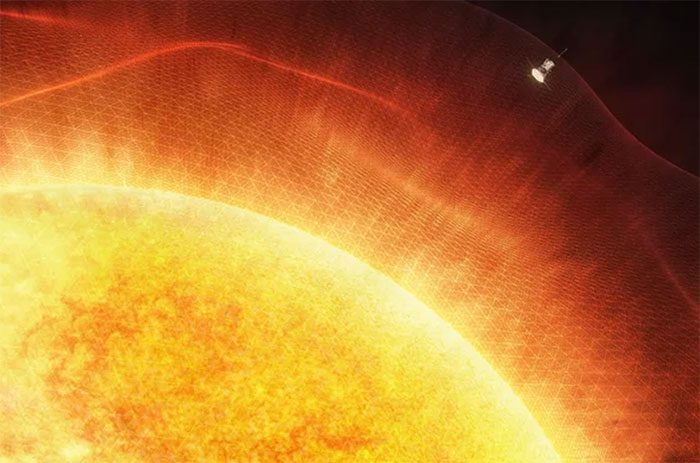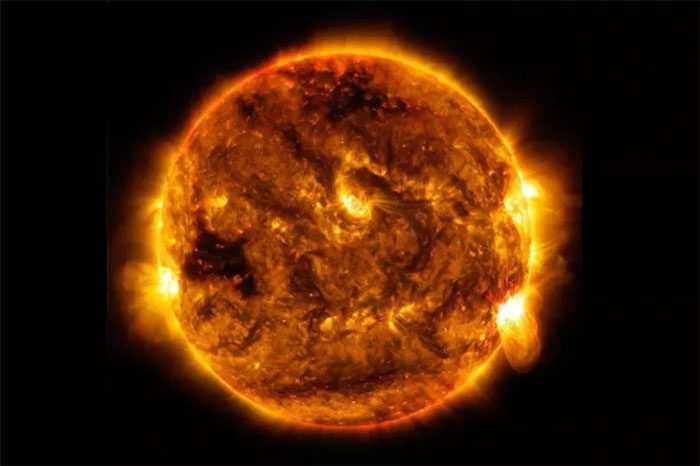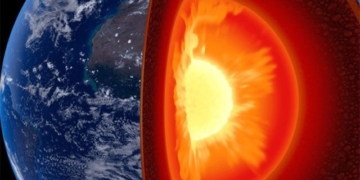Recent discoveries regarding a type of wave known as High-Frequency Reverse Waves (HFR) have challenged fundamental physical laws that humanity has known until now, while also suggesting possibilities that we have yet to explore.

In April 2021, the Parker Solar Probe crossed the boundary and entered the Sun’s atmosphere. (Image: NASA).
Recently, scientists have discovered a new type of high-frequency wave on the surface of the Sun. Strangely, this wave travels three times faster than what was previously observed in earlier studies.
They have named these waves High-Frequency Reverse Waves (HFR). These waves were detected moving in the opposite direction to the Sun’s rotation. The results of this research were described and published on March 24 in the journal Nature Astronomy.
To date, scientists have still been unable to unravel the mysteries deep within the star at the center of the Solar System. Therefore, they often shift to measuring and calculating sound waves that travel across the surface and then reflect back to its core to infer what is happening inside. However, the unprecedented speed of HFR waves suggests that scientists may be missing something larger.
“The existence of HFR waves and their origins is a true mystery and may hint at interesting physical phenomena occurring,” said co-author Shravan Hanasoge, an astrophysicist at the Space Science Center of New York University, Abu Dhabi, in a statement. This could help illuminate the ‘invisible world’ inside the Sun.
Initially, scientists believed that solar sound waves formed near the surface due to the Coriolis effect. According to this, points located on the equator of a rotating sphere appear to move faster than points located at the poles.

Image of the Sun from NASA’s Solar Dynamics Observatory. (Image: NASA).
Once the waves are formed, scientists propose that there are up to three possible mechanisms that could accelerate them to become HFR waves. These include the Sun’s magnetic field, or its gravitational force could enhance the Coriolis waves, or superheated convection currents moving beneath and above its surface formed through a special process.
However, these new waves do not seem to result from any of the aforementioned processes, as no feasible process aligns with the data. This has led to a series of entirely new questions that transcend the fundamental physical laws previously known to humanity.
Filling these “gaps” in human knowledge could help researchers gain a better understanding of the inside of the Sun, as well as how the Sun affects Earth and other planets in the Solar System.
Scientists believe that this knowledge may also provide insights into a similar type of high-frequency wave known as Rossby waves, which may have traversed Earth’s oceans four times faster than current models can explain.


















































